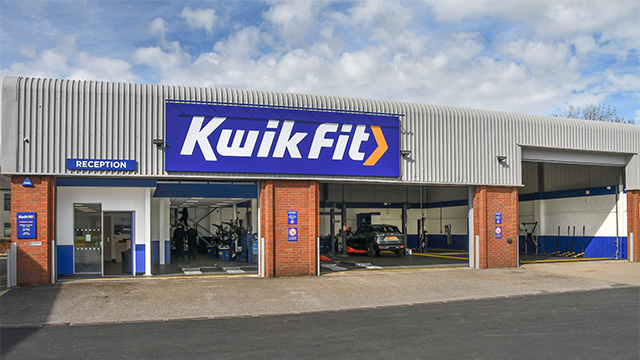Despite a massive expansion programme, JDWetherspoon has seen its profits growth slow down compared with previous years, reflecting the difficulty facing other operators. But can the company become flavour of the month once again? By Jon Neale
Until a few months ago, it seemed JD Wetherspoon could do no wrong. The number of pubs operated by the group was fast increasing to the delight of both industry admirers and shareholders.
But success can be short-lived. Last year’s drop in consumer spending meant it was going to be a tough year for the leisure industry, and even Wetherspoon’s success would not see it spared. November saw the company issue a profit warning, and a 28.4% drop in its share price to 181.5p. In March 2000, that price stood at 450p.
The group’s half-year results, published on Friday 7 March, brought further bad news. The brand reported an after-tax profit increase of only 3%, after years of producing rises of more than 20%.
Tim Martin, the company’s normally press-friendly chairman and for many years the public face of the group, declined to comment on the results. A statement saying he is not giving interviews for a year prompted industry speculation that he has become a mere figurehead of his creation.
John Hutson, managing director of JD Wetherspoon, is the man some see as really running the show, and he was more than willing to talk about the future.
“We think the results overall aren’t that bad,” he says. “Over the past six months the company has absorbed about £2.5m of additional duty costs on premium spirits, as well as £2.5m of insurance costs.
“These relatively unique costs have put a dampener on our half-year profits. If it wasn’t for these costs, profit would be up by 16%-17%. Sales are up 20% and like-for-like sales are up 4.7%.”
“We are optimistic. There has been no immediate change in strategy,” he adds, asserting that Wetherspoon’s November prediction of an 8% increase in the full year results remains unchanged.
Hutson is not the only one with an optimistic outlook – industry pundits still retain faith that the chain, well known for its no music policy, has not lost its touch, despite assertions that it might have over expanded on the back of buoyant consumer spending in the late 1990s.
“It’s still one of the leading operators in the sector. With the whole market down generally, it’s very easy to point at Wetherspoon and say it’s not as good,” says Trevor Watson of Davis Coffer Lyons.
“But it is still increasing like-for-like sales, and profits have increased. It is still planning to add to the estate, but not to the same extent. Like any well-run company, it is trimming its expansion to match the current market conditions.”
According to Hutson, the chain has cut its expansion plans from 80 units per year to around 50. “The market is less competitive than it was – we should be a little more in a position to pick and choose. We can spend more time looking at the physical site of the pub,” he explains.
As well as examining the demographics of any future sites, the company also enlists the opinions of staff and managers of existing Wetherspoon pubs in the area.
Indeed, Hutson believes that the faltering high street can be turned to his company’s advantage.
“We can be more aggressive with landlords, like anyone in the property market,” he says. “People are chasing similar sites, but we’re in no rush to compete. We are keen to do business with landlords but we are not going to chase.”
Solid success
In spite of the fact the group has rolled out identikit pubs, commentators say Wetherspoon’s success can be partly attributed to the fact that its pubs are not as heavily branded as some other familiar high street ventures.
Colin Wellstead of Christie & Co explains: “The whole thing about the concept of brands in the pub market is that most of their customer base don’t realise or care that it is a chain.”
Hutson maintains Wetherspoon is not a brand, although when talking later about Lloyd’s No 1 – the company’s trendy bar offshoot – he inadvertently talks about the company’s two “brands”. “We have never thought of ourselves as operating branded pubs. We try not to talk about the brand name. We’ve always said to management that they must operate the best pub in the area. People have a strong association with their local pub.”
Jon Lake, a leisure-focused corporate finance specialist at Deloitte & Touche, says: “It comes down to a set of retail disciplines, such as operating procedures, staff training and investment criteria.”
“If you just have a specific colour on the wall and give it a certain name, it’s difficult to see beyond that. Wetherspoon is fundamentally different in that it understands its market and serves it well.”
Wellstead agrees, but adds a note of caution. “The big challenge is continuing to grow the business. They have developed massively over the past five years. They have to continue evolving the concept.”
Lloyds No 1 would initially appear to bear a resemblance to a more conventional brand.
Wetherspoon brought the 10 bars bearing that name from Wolverhampton & Dudley in 2000 – a big departure from the pub’s no-music policy.
“Lloyds No 1 is yet to be proven,” Lake says. “There is no doubt they’re moving forward as a listed company, and there are demands for next moves, but I’m not sure that Lloyds No 1’s growth will convince people to invest. People are avoiding the market anyway because of oversupply. There is a lot of watching and waiting.”
Hutson says: “We felt they were good quality locations, and complementary to existing Wetherspoon sites in the area.
“We felt that it had a huge potential. In city centres, we could have pubs with later hours and music. So we put in Wetherspoon standards, systems and methods of operation.”
“Although we brought it as a chain, we haven’t rolled it out as a chain. We have architect-designed interiors and introduced individual designs and names linked to the history of the area. We’ve never attempted for a moment to operate a second brand,” says Hutson.
According to Lake, Wetherspoon claims it doubled turnover at the bars simply by implementing its retail disciplines.
While commentators agree that the company’s strength is its retail disciplines, they also cite Tim Martin, Wetherspoon’s ebullient chairman, as a key aspect of the brand. But with his semi retirement from speaking in public, speculation has sprung up that this may be a sign that he is about to take a lower profile.
The team leader
Sources assert that Hutson’s team really runs the company, with Martin now more of a figurehead. Martin’s eccentricities, such as his euroscepticism, and an ill-judged announcement that Wetherspoon was about to compete with the coffee chains, could damage the brand if not reined in.
Hutson denies these assertions. “It is certainly not a problem. He’s a very thoughtful person and considers his actions thoroughly. He will do what he believes is best for employers, investors and shareholders,” he says.
He adds that Martin’s energy is vitally important to maintaining the Wetherspoon momentum, notably the self-criticism and the consequent small improvements he believes are so important to the company.
“As the number of new pubs increases, their contribution drops,” he says.
For a company renowned for its strong growth, that is the main issue as it approaches maturity.
|
JD Wetherspoon CV |
|
2002: 600th pub opens in Islington, London |
|
2001: 500th pub opening |
|
1994: 100th pub opening |
|
1992: The 44-strong company floats on the Stock Exchange with shares floating at 31p |
|
1988: Scottish & Newcastle buys 20% of the company for £1.5m |
|
1986: 12th Wetherspoon opening |
|
1983: 7th pub opening |
|
1979: Tim Martin opens his first Wetherspoons in London |










